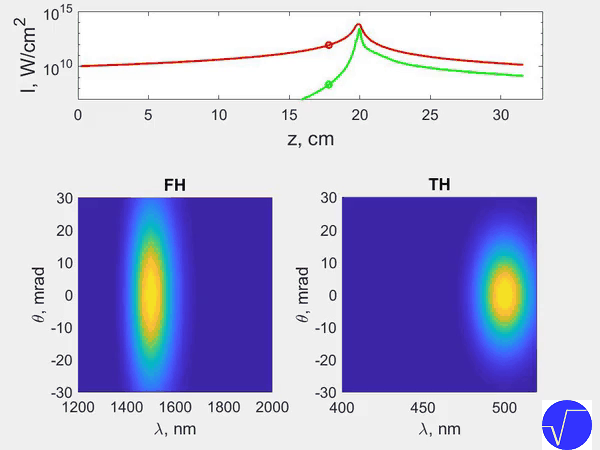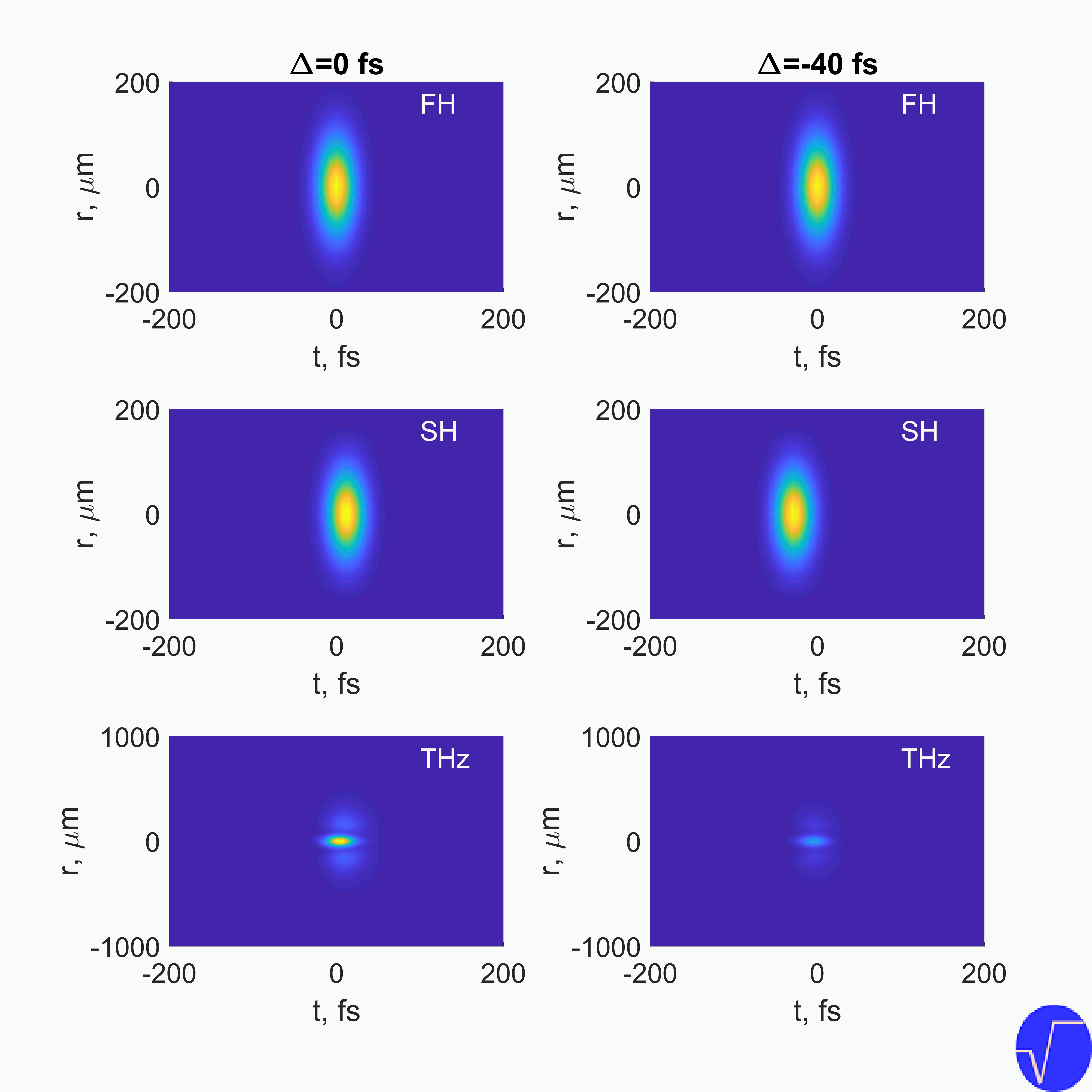Update: 2022-07-05
THz and third-harmonic generation in air
|
In this publication, the study
is devoted to the third harmonic genereation by the focused femtosecond laser pulses in air.
At the focus, plasma channel is generated. In the numerical simulations,
we utilized 1) multiphoton ionization (MPI) model and 2) Yudin-Ivanov model,
that includes both MPI and tunnel ionization. The pump light wavelength was 1500 nm
and the tunnel ionization is feasable at infrared. Indeed, we demonstrated that the
second model gives a good coincidence with the experiment. Namely, the X-waves were
observed both in the experimental and theoretical frequency-angular spectra of the
third harmonic and the estimated group velocity was the same when the tunnel ionization is included in the model.
|

|
|
In this publication, the terahertz (THz) radiation was generated
by bichromatic femtosecond pump (800 nm and 400 nm) focused in air. The dependencies of the conversion efficiency to the THz and third harmonic (TH) radiation on the
time delay between the fundamental (FH) and second harmonics (SH) were measured experimentally as well as calculated numerically. We call the dependencies
as correlation functions. The optimal delay was shown to be
dependant on the input energy of FH and SH. The generated plasma channel length could be estimated from the correlation functions.
|

|
|
In this publication, the influence of the X-wave formation of the bichromatic pump waves in air plasma on the conical THz radiation was studied. Both pump (fundamental and second harmonics) X-waves were shown to propagate at the same group velocity V. The conical THz radiation can be treated as the X-wave that has the same group velocity V. Therefore, the cone angle from the frequency-angular specrta of the output pump waves can be estimated. |